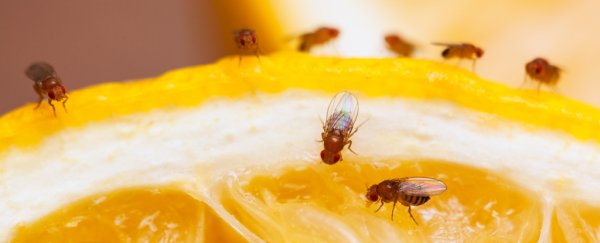Flies in hospitals may pose a greater threat than a buzzing annoyance. A study published Friday found almost 9 out of 10 flying insects collected from seven hospitals in England carried potentially harmful bacteria on or in their bodies.
Over half of the bacterial strains identified were 'superbugs,' meaning they were resistant to at least one class of antibiotic, with almost 20 percent resistant to multiples classes of antibiotics. Penicillin was the least effective antibiotic against the bacteria that was found.
"The results from this large-scale microbiological analysis show that a variety of flying insects collected from UK hospitals do indeed harbour pathogenic bacteria of different species," lead author and Aston University PhD student Federica Boiocchi said in a university news release.
"What's quite interesting, though, is the high proportion of drug-resistant bacteria found in these samples. It's a vivid reminder of how our over-use of antibiotics in healthcare settings is making infections more difficult to treat."
Eighty six bacterial strains were identified on or in the insects, with the family that includes E. Coli and Salmonella (Enterobacteriaceae) being the most common at 41 percent of the strains.
Twenty four percent of the strains were within the family that includes the food poisoning germ B. cereus (Bacillus) and 19 percent were within the family that can cause skin infections, abscesses, and respiratory infections (Staphylococci).
Researchers collected almost 20,000 flying insects over 18 months, using ultraviolet-light flytraps, electronic fly killers, and sticky traps. Over three-fourths of the insects collected were flies, including house flies, along with aphids, ants, bees, wasps, and moths.
"NHS hospitals are extremely clean environments and the risk of insects carrying bacteria and transferring these to patients is very low," Anthony Hilton, professor of applied microbiology and co-author, said.
"What we are saying in this paper is that even in the cleanest of environments, it's important to take steps to prevent bacteria being brought into hospitals by insects. NHS hospitals will already be implementing many of these measures, but there are simple steps that can be taken to improve this further."
Higher numbers of insects were collected in the spring and summer seasons, and insects were collected from multiple areas within the hospitals, including where food for patients, visitors, and staff was prepared and stored, as well as in patient rooms, maternity wards, and neonatal units.
The study was published in the Journal of Medical Entomology. Killgerm Chemicals Ltd, which funded the study, intended for results to be useful to those in charge of pest management measures.
This article was originally published by Business Insider.
More from Business Insider:
